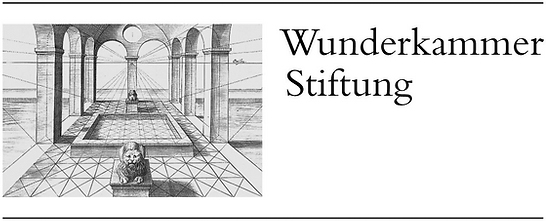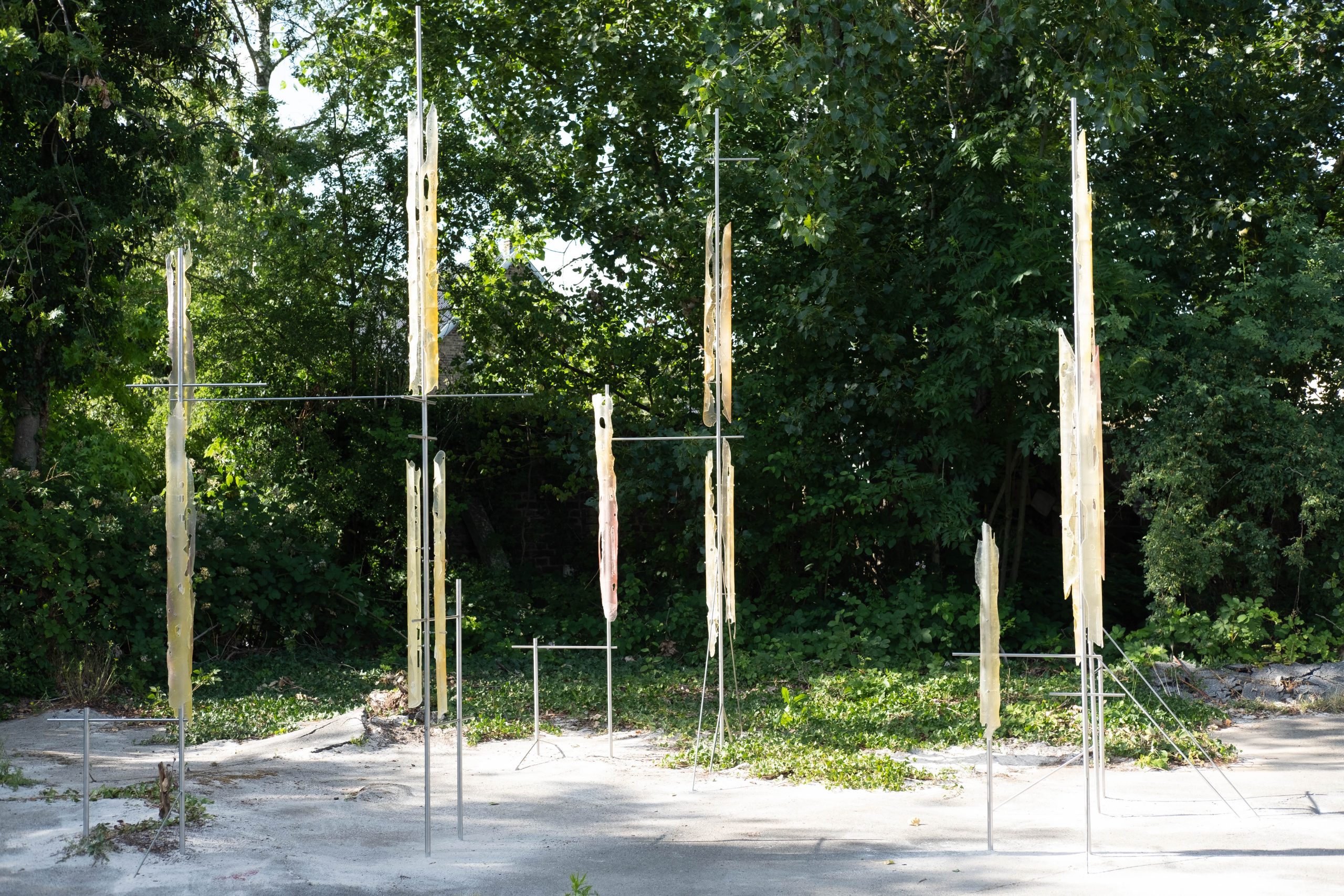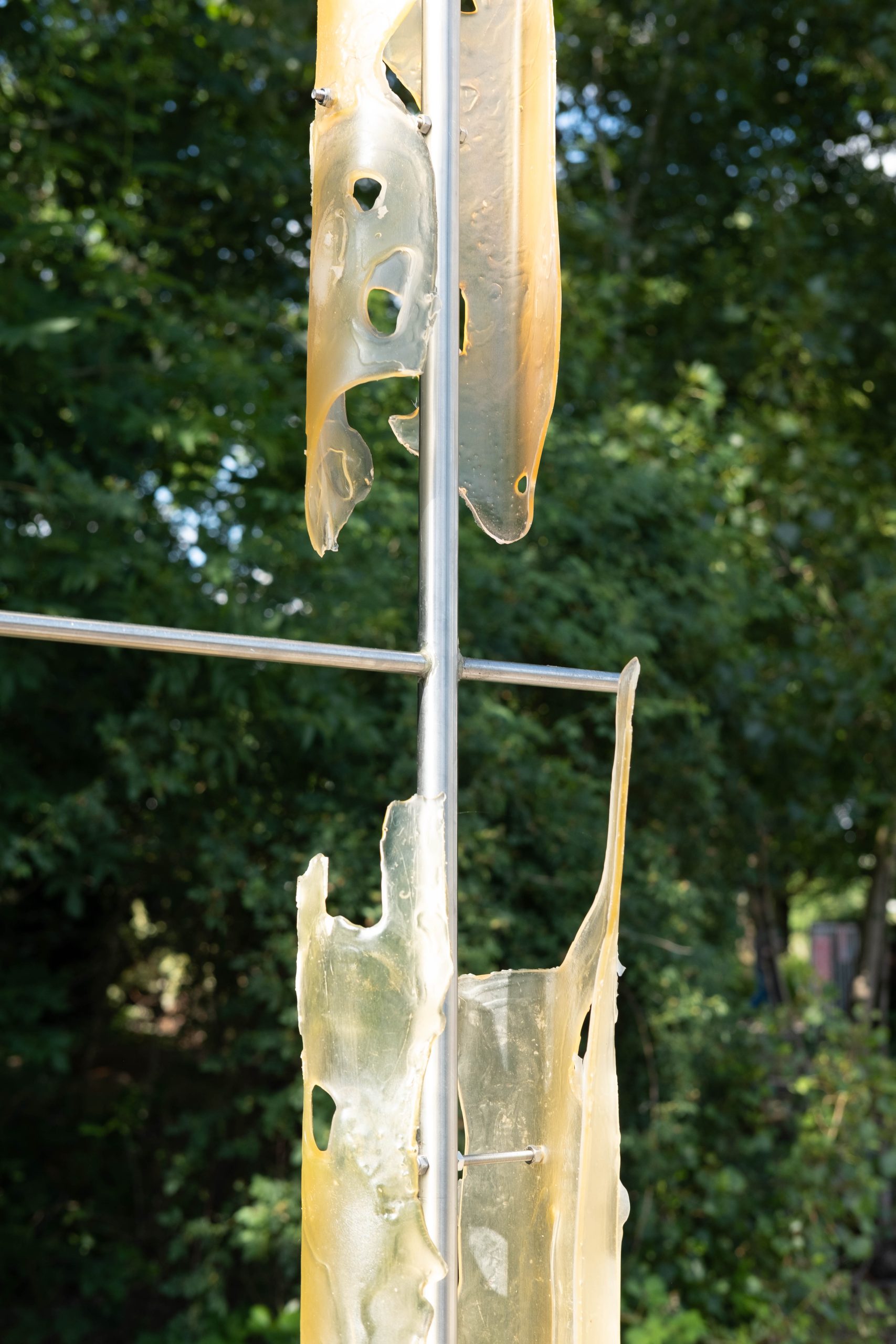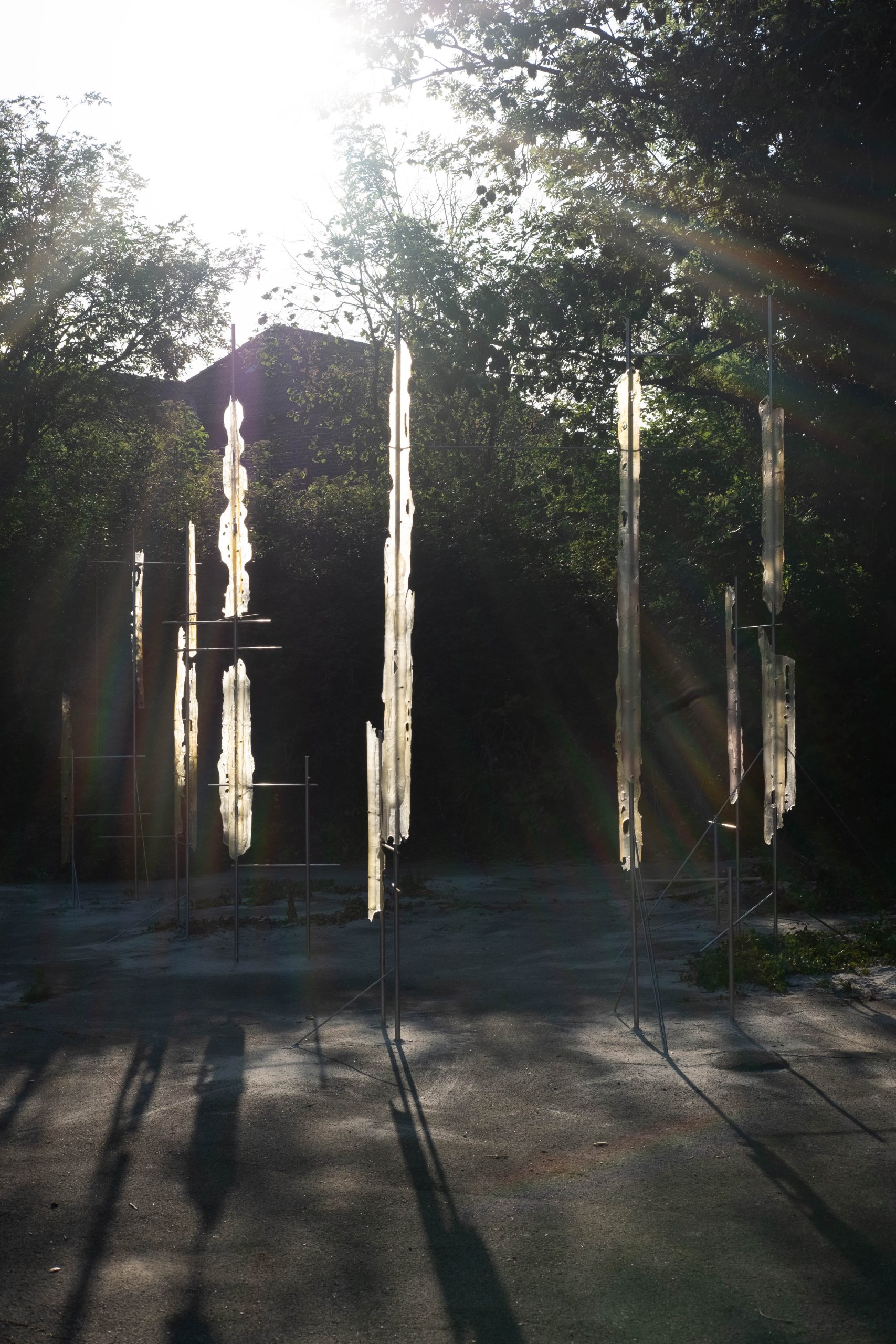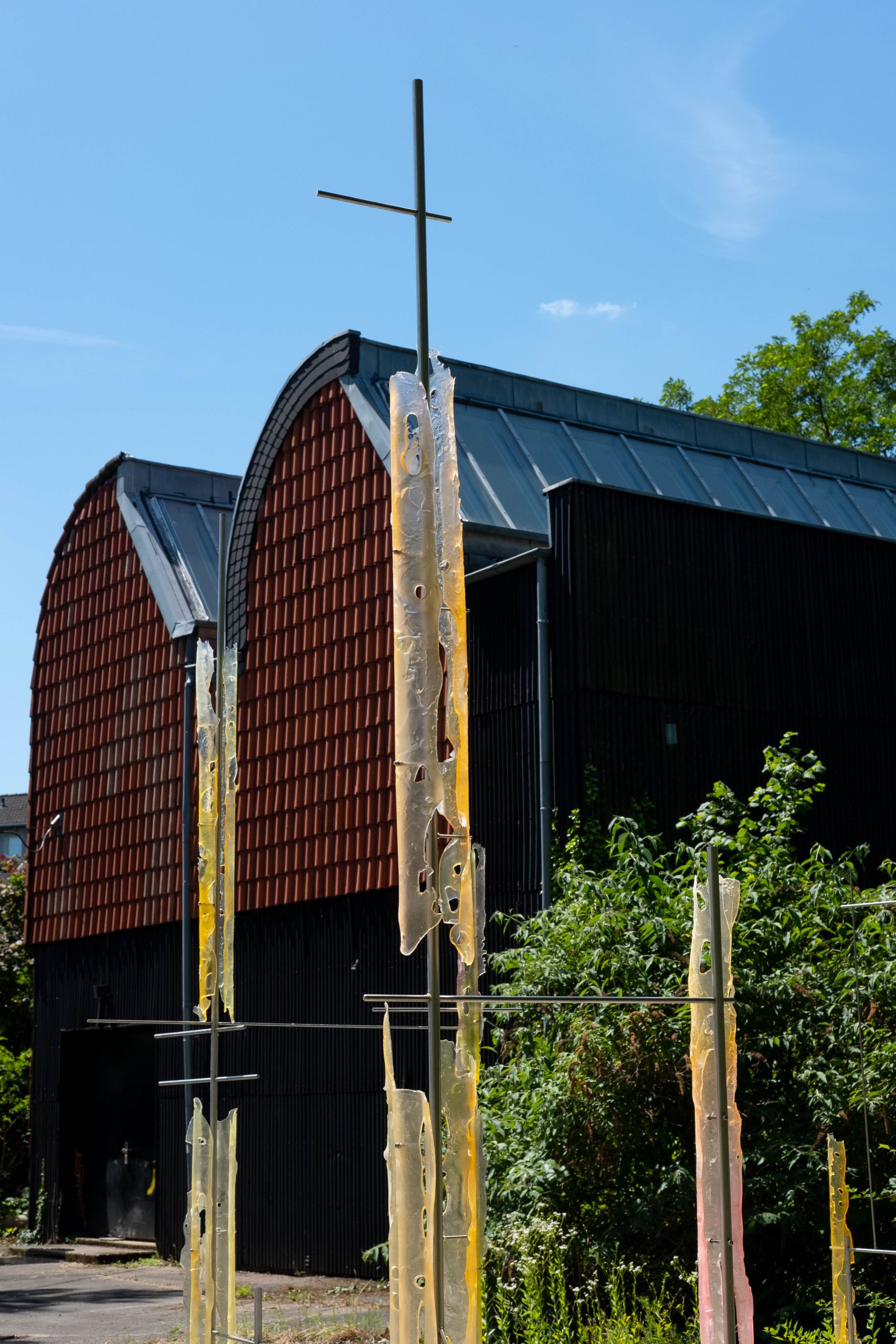SimultanProjekte 2022
12.06. – 18.09.2022
Standing in the shadow of the tall stone column, an absence of light is cast over my body. It is like a dark passageway, hanging cool and heavy in the dusty old church. Above, the stain-glass windows shimmer with warmth, sunshine streaming through to interrupt this dimness. Vibrant hues settle up high upon the walls of the cold building; little shapes of saturated colour seemingly speaking their own language; luminous symbols willing on some sort of divine intervention, longing for a semblance of meaning amid this colourful darkness.
When first walking through the Simultanhalle, Jill Kiddon was struck by the original purpose of the building, which was to test the effects of natural light during the planning of Museum Ludwig—it is essentially an architectural model simulating how light resonates in space, impacting the mood of the building. This emphasis on light intrigued Kiddon, who began thinking about how humans have harnessed natural light throughout history, constructing buildings with vast windows that let sunshine flood in, like churches and cathedrals within which light changes as the day passes: it becomes divine, mystical, secretive even.
Her installation Lucent Elevation (2022) is its own architecture, an structure of steel that reaches up into the sky, an upward pull that acknowledges nature, pulling it into its fold, while winking at the heavens. It is a skeleton in a process of becoming. Ostensibly incomplete, the work could still be gradually growing, column after column rising from the sandy ground. It even has its own windows: subtle organic shapes clinging to steel arms, both shielding and illuminating the silver. Made of resin stained with the palest of pinks, yellows, oranges and greens, these translucent forms become lucent at certain times of the day, glowing like opals. There are even markings like fingerprints or wrinkled bark or leaf veins imprinted within the resin, reminding us that nature too is its own divine being. This is therefore not just a structure that pays homage to the holiest of buildings, but a living organism, which Kiddon wants you to breathe with, letting the shifting shades of light fall upon your skin as you weave through the fragmented framework. Disjointed, it is like a ruin, but speaks not of decay and disintegration, but of an opening into space, seeking expansion.
Ruins hold time. Not only because they summon history—years, decades, centuries, collapsed in the blink of an eye—but because they also hold imagined futures. Of what a building wanted to become; of what it could have been if it had survived; and of what the crumbling remains might evolve into, tomorrow—how they might once again become whole, or invoke something entirely new. Kiddon is interested in such fragments and, as such, shapes structures that have a sense of incompleteness, but within which there is an inherent openness: to the past and the future, to the inevitable change that comes with every new moment. As she says: “I like the idea that things change and evolve and become something new.”(1)
The French philosopher Simone Weil spoke of “feeding on light” with spiritual intent, as a way of counteracting darkness with grace. She saw it as one of the two forces that rule the universe: light and gravity. Weil encouraged the effort of attention and said that, “one day, a light exactly proportional to those efforts of attention will flood the soul. Each effort adds a little more gold to a treasure that nothing in the world can subtract.”(2)
So, in the spirit of Weil, please walk amidst Kiddon’s church, hold the effort of attention, and see if you can let the light stream in to soften this colourful darkness.
Louisa Elderton
Endnotes:
1) Jill Kiddon interviewed in her Berlin-based studio by the author, June 3, 2022.
2) See Simone Weil, Gravity and Grace (London and New York: Routledge Classics, [1947] 2002).
Lucent Elevation
Edelstahl, Kunstharz
